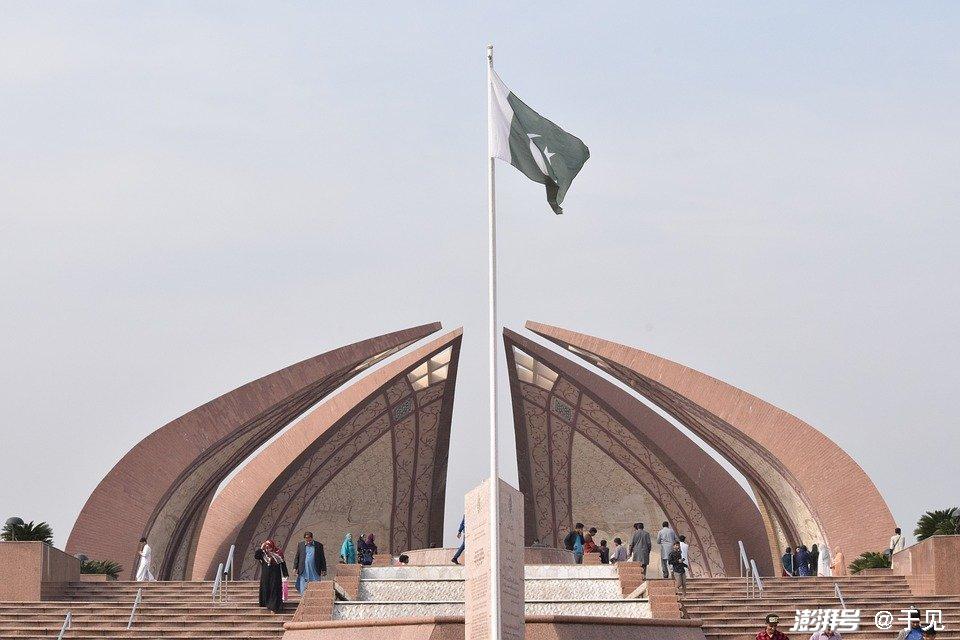In Order To Compete With China, India Created Its Own Pirated Version Of The "One Belt, One Road" Initiative And Became An International Laughing Stock.
In Order To Compete With China, India Created Its Own Pirated Version Of The "One Belt, One Road" Initiative And Became An International Laughing Stock.
When I first saw the news headlines: India wants to build a "new spice road" to benchmark China's Belt and Road Initiative, I almost sprayed the half-cold milk tea on my phone - to be honest, the taste was too strong. The road in China is genuine, and the rails laid out for ten years are reflective in the sun; the road in India
When I first saw the news headlines: India wants to build a "new spice road" to benchmark China's Belt and Road Initiative, I almost sprayed the half-cold milk tea on my phone - to be honest, the taste was too strong. The road in China is genuine, and the rails laid over ten years are reflective in the sun; the road in India, even the first rail is still in the slide.

I looked through the information first. Modi patted his chest on the G20 stage last year and said that "trade in the 21st century depends on my corridor." The countries that have signed below, including Saudi Arabia, France, Italy, and the United States, are in a better position than the last, but if they really have to pay, everyone puts their wallets back. Even Israel just blinked: Brother, can you settle the arms bill first?

Not to mention that outsiders don't buy it, India's own family is also a bit strapped. Over the past ten years, the country has laid an average of 1.3 kilometers of rail tracks a day, which is not as fast as repairing the water pipes downstairs in my house. What's even more worrying is that they also have four track gauges - the locomotive needs to change shoes while running, can it not be slow? When three trains rear-ended each other in Orissa last year, I was watching the live broadcast at home, and I kept thinking to myself: With your level, you still want to go abroad?

I also took a look at the design of the Spice Route, which is as exaggerated as a children's puzzle: the Indian port first floats to the United Arab Emirates, then transfers to the railway to Saudi Arabia, then digs an undersea cable to Greece, and finally turns to Marseille, France. It sounds lively, but in fact, every additional section means one more unloading, one more tariff, and one more layer of wrangling. Reduce shipping time by 40%? I think it’s 40% more risky.
Saudi Arabia is talking about investing money, but oil prices are fluctuating and their pockets are tight. Türkiye is more direct, saying "It can't happen without me", casually throwing out a development path for Iraq, and forcing India to the corner of the map. The scene was like fighting for a stall in a vegetable market. Whoever made the loudest noise would sit down first.

When it comes to the quality of infrastructure, India amazes me. The dam in Jharkhand, which took 42 years to complete, collapsed 22 hours after the water was released. Officials said it was caused by rats. If it were really a mouse, it would have to be refined to the size of a satellite. There was also the Agwani Bridge, which collapsed three times and cost more than 17 billion rupees. Later, they photographed the cracks as an "underwater check-in point" and posted them on social media, euphemistically calling it an "Internet celebrity scene."

On the other hand, here in China, trains leave frequently, and Chinese welcome signs are hung at the entrances of cafes in European towns. I’ve seen a video of Saudi Arabia’s Mecca High-Speed Railway, and it’s as steady as a tablecloth at a speed of 300 an hour. A foreigner made a short video saying that he fell asleep in the car without turning over the cup, and laughed like a child. This is called strength.
Having said that, the United States was the driving force behind the scenes. It first boasted about PGII and B3W, but later the funds shrank to 30 billion US dollars. Thirty billion U.S. dollars sounds bluffing, but spreading it across three continents and eight countries is like spreading soy sauce on a dumpling wrapper—everyone can’t get rid of it even if they try to taste it. The United States talks about "supporting India", but its inner plan is to sell natural gas and high-priced weapons. The White House is very shrewd.

Someone asked me, is India completely out of business? I think that if you really want to achieve something, you must first straighten your own roads and build strong bridges, and don't rush to the world stage with your PPT. After all, infrastructure construction is not about making movies, and special effects cannot be produced through editing. China’s Belt and Road Initiative has been built from scratch and laid out step by step. No matter how slogans are shouted one day, a railway will fall from the sky.
Let’s talk about the current situation. The situation in the Middle East is currently chaotic, and India still stands on Israel’s side. Can the Arab world feel comfortable? If the transportation line has to cross the desert and then cross the strait, in the event of local conflict, the railway tracks will have to be used as cannon fodder. Investors are all people who can calculate faster than an abacus. Who is willing to pour money into a black hole of uncertainty?

I remembered that when I was a child, two families built a house in the village. One family laid the foundation first before laying bricks, as slowly as an old cow pulling a trailer; the other family first built scaffolding and painted the exterior walls with colored paint. It looked impressive from a distance from the entrance of the village. However, when a typhoon came, the latter's painted walls were blown away, and the smoke from the house with a good foundation was still lingering. If the Spice Route were to be carried out as it is now, it would probably be that painted wall.
But I don’t laugh at the Indian people either. They sincerely want to live a good life. It’s just that in grand narratives, the biggest fear is that leaders will use their dreams as projectors, and the whole world will have to watch the slides at the push of a button. When it comes to infrastructure, reinforced concrete cannot lie. If you are slow and of poor quality, it will crack to show you.
Someone privately messaged me: What would happen if New Spice Road ends up dead? I said, it's not necessarily a bad thing. The broken corridor dream may make India look back at the potholes beneath its feet. Repairing the domestic road network, improving track gauge uniformity, and learning safety management are the real gains. As for international reputation, if it is ruined, it can be earned again, but lives and funds are hard to recover once lost.
It's a bit late at night as I write this. I looked up and looked out the window. The night shift lights on the construction site downstairs were on and the crane was still spinning. A real road is paved little by little with sweat and cement, not by exaggerated slogans or by the spotlight. When the G20 is held next year, will Modi hold that PPT again? have no idea. All I know is that the bridge must be able to pass cars, and the road must be able to carry goods, so that the spices will be fragrant, otherwise it will just be pepper powder scattered in the wind, which will choke people.
Not much more to say, let’s end the story here. Let’s leave a question mark: wait until 2026, if the first sleeper section of the Spice Route is really implemented, I will treat you to a cup of Indian milk tea; if you are still drifting in the PPT, I will make a cup of black tea myself and continue to watch the world drama.





